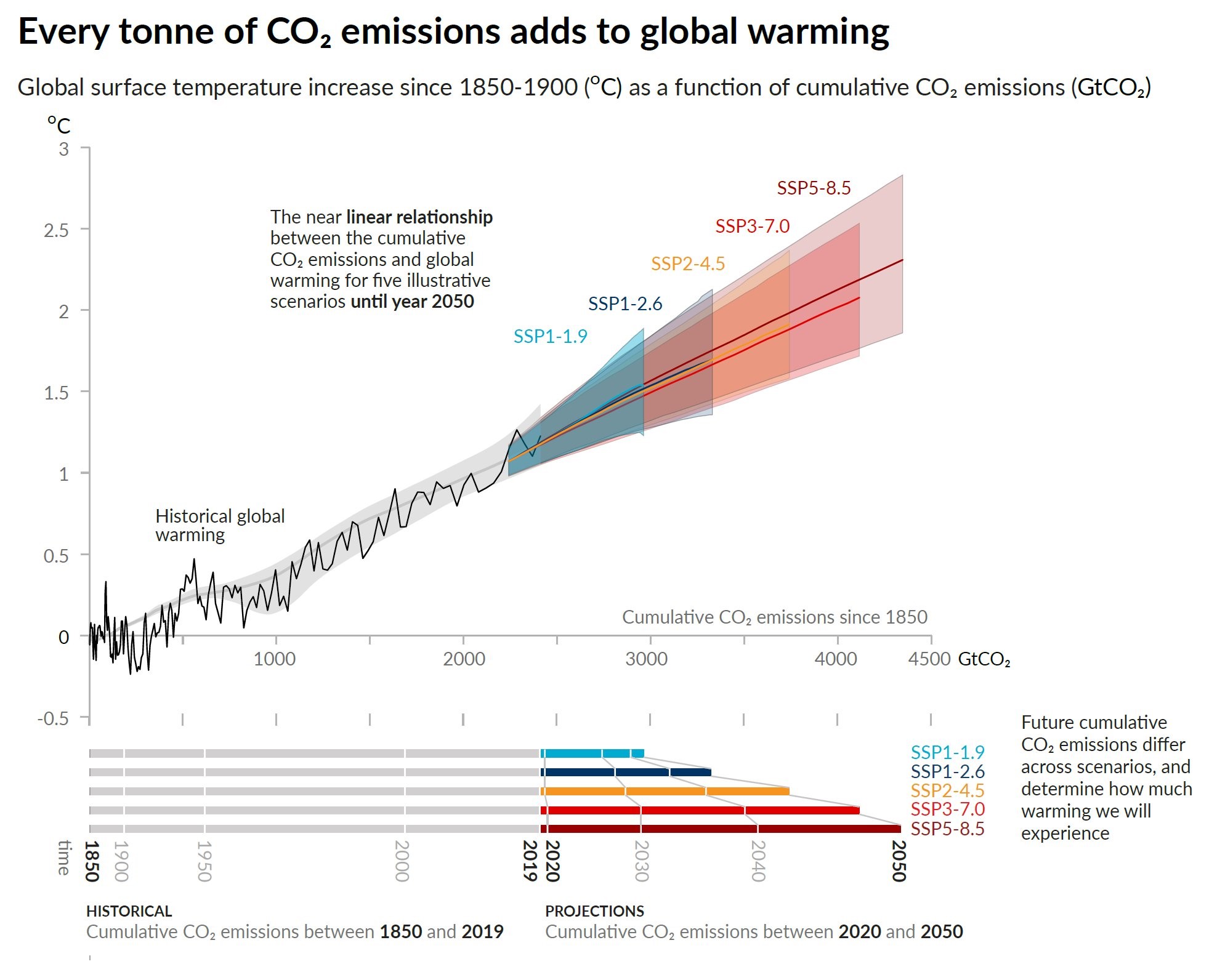The Collapse of Confidence in Carbon Capture – Crude Oil Prices Today | OilPrice.com

Assessment of Carbon Capture and Storage (CCS) Viability and its Implications for Sustainable Development Goals
Introduction: CCS Technology and Climate Action (SDG 13)
Carbon Capture and Storage (CCS) technology, including Direct Air Capture (DAC), has been positioned as a critical tool for industries, particularly oil and gas, to decarbonize operations and contribute to climate action targets under SDG 13. Governments and corporations have allocated substantial investment to develop this technology as a transitional measure to mitigate carbon emissions while maintaining energy production. The objective is to capture carbon dioxide at its source or directly from the atmosphere for long-term underground storage, thereby aligning industrial activity with net-zero emissions goals.
Performance Deficiencies and Setbacks for Sustainable Development
Recent evidence indicates a significant gap between the projected and actual performance of CCS facilities, raising concerns about their effectiveness in achieving global climate targets and supporting sustainable development. This underperformance directly challenges the integrity of climate strategies reliant on this technology.
- Investor and Public Confidence: Widespread project delays, technological glitches, and substantial cost overruns have eroded confidence in CCS as a viable climate solution.
- Capture Rate Discrepancies: A significant number of operational CCS and DAC facilities are capturing far less carbon than their stated capacities, undermining their contribution to SDG 13 (Climate Action).
- Diversion of Resources: Critics argue that an over-reliance on CCS diverts essential financial and political capital away from the development of long-term renewable energy infrastructure, which is fundamental to SDG 7 (Affordable and Clean Energy).
Case Studies: Technological and Economic Challenges
Specific project outcomes highlight the persistent challenges hindering the scalability and reliability of CCS, impacting goals for sustainable industrial innovation under SDG 9 (Industry, Innovation, and Infrastructure).
- Climeworks DAC Facilities: The Swiss company Climeworks, a leader in DAC technology, has faced significant performance issues. Its flagship Mammoth plant in Iceland, with a designed annual capture capacity of 36,000 tonnes of CO2, captured only 750 tonnes in its first ten months of operation. Citing economic uncertainty and reduced momentum, the company announced a workforce reduction of over 10 percent.
- United Kingdom CCS Strategy: The UK government has committed $40.5 billion to CCS technology to support its 2050 net-zero target. However, it has acknowledged that its interim goal of capturing 20-30 million tonnes of CO2 annually by 2030 is no longer viable. A government committee has questioned the cost-effectiveness of planned projects and warned against over-reliance on the technology.
- Market Projections vs. Reality: Despite a projected market investment of $80 billion by 2030, the sector’s growth is hampered by its dependence on subsidies and the ongoing technological challenges that prevent it from moving beyond pilot phases, a critical failure in fostering the innovation required by SDG 9.
Conclusion: Re-evaluating CCS in Global Goal Frameworks
The current state of CCS technology presents a significant risk to the achievement of multiple Sustainable Development Goals. The disparity between its theoretical potential and operational reality necessitates a critical re-evaluation of its role in national and international climate strategies.
- The technology’s poor performance and high costs challenge its contribution to SDG 13 (Climate Action) and SDG 7 (Affordable and Clean Energy).
- Failures to scale the technology effectively represent a setback for SDG 9 (Industry, Innovation, and Infrastructure).
- The reliance on public-private partnerships (SDG 17) for funding these underperforming projects warrants scrutiny regarding the effective allocation of resources for sustainable development.
Analysis of Sustainable Development Goals in the Article
1. Which SDGs are addressed or connected to the issues highlighted in the article?
-
SDG 7: Affordable and Clean Energy
The article discusses Carbon Capture and Storage (CCS) as a technology linked to the fossil fuel industry, which is a core component of the global energy system. It implicitly contrasts investment in CCS with investment in renewable energy, touching upon the broader strategy for achieving a “green transition.” The debate over whether CCS is a viable “clean” technology or a diversion from true renewables is central to this goal.
-
SDG 9: Industry, Innovation, and Infrastructure
The article focuses on CCS as an industrial innovation designed to upgrade and retrofit infrastructure (like power plants and industrial operations) to make them more sustainable. It extensively details the technological challenges, glitches, high costs, and performance failures of this innovation, directly relating to the goal of building resilient and sustainable industrial infrastructure.
-
SDG 13: Climate Action
This is the most prominent SDG addressed. The entire premise of CCS technology is to serve as a climate change mitigation tool by capturing CO2 emissions. The article directly evaluates the effectiveness of CCS in achieving climate goals, citing national policies (the UK’s net-zero aim), investment figures for climate action, and evidence that questions the technology’s ability to deliver the promised emissions reductions.
2. What specific targets under those SDGs can be identified based on the article’s content?
-
SDG 7: Affordable and Clean Energy
- Target 7.2: By 2030, increase substantially the share of renewable energy in the global energy mix. The article connects to this target by highlighting the critique that “overreliance on CCS could divert crucial funding away from long-term renewable energy development,” suggesting a conflict in resource allocation that could hinder progress on this target.
- Target 7.a: By 2030, enhance international cooperation to facilitate access to clean energy research and technology… and promote investment in energy infrastructure and clean energy technology. The article provides examples of massive investments in CCS, such as the UK committing “$40.5 billion to CCS technology” and a potential global market of “$80 billion in investment by 2030.” However, it questions whether CCS qualifies as a viable clean energy technology due to its poor performance.
-
SDG 9: Industry, Innovation, and Infrastructure
- Target 9.4: By 2030, upgrade infrastructure and retrofit industries to make them sustainable… and cleaner technologies and industrial processes. CCS is presented as a technology for exactly this purpose. The article’s discussion of “delays, glitches, and cost overruns” in CCS projects directly reflects the challenges in achieving this target.
- Target 9.5: Enhance scientific research, upgrade the technological capabilities of industrial sectors… encouraging innovation. The article discusses the development of CCS and Direct Air Capture (DAC) as innovative technologies. However, it notes that “technology glitches and the high costs” and the struggle of DAC to “grow out of the pilot phase” indicate significant setbacks in realizing the potential of this innovation.
-
SDG 13: Climate Action
- Target 13.2: Integrate climate change measures into national policies, strategies and planning. The article explicitly mentions the UK’s national strategy, which has “committed $40.5 billion to CCS technology in support of its net-zero emissions aims for 2050.” It also notes the government’s subsequent acknowledgment that its 2030 carbon capture target is “no longer viable,” showing a direct link between a climate technology’s performance and national policy.
3. Are there any indicators mentioned or implied in the article that can be used to measure progress towards the identified targets?
Yes, the article mentions several quantitative and qualitative indicators that can be used to measure progress, or the lack thereof:
- Financial Investment in Climate Technologies: The article provides specific figures that serve as indicators of financial commitment.
- The UK government’s commitment of “$40.5 billion to CCS technology.”
- The projection that the CCS market could attract “$80 billion in investment by 2030.”
- Carbon Capture Volume (Target vs. Actual): This is a key performance indicator discussed in the article.
- The UK’s original target to “capture between 20 and 30 million tonnes of carbon dioxide a year by 2030,” which is now deemed “no longer viable.”
- The planned capture rate for a UK gas power plant is “95 percent of its emissions – around 2 million tonnes a year.”
- The stark contrast between planned and actual performance at Climeworks’ Mammoth plant, which has a capacity of “36,000 tonnes of carbon dioxide a year” but “captured just 750 tonnes in the first 10 months.”
- Project Viability and Delays: The article implies that the number of delayed or canceled projects is an indicator of the technology’s failure. It repeatedly mentions “delays in the rollout of CCS projects,” “decades of delays,” and “first-of-a-kind technology challenges continue to contribute to delays.”
- Investor and Public Confidence: While qualitative, this is presented as a critical indicator. The article’s title, “The Collapse of Confidence in Carbon Capture,” and statements that poor performance is “shaking investor and public confidence” and has “cooled investor interest” suggest a decline in the social and economic support for the technology.
4. Create a table with three columns titled ‘SDGs, Targets and Indicators” to present the findings from analyzing the article.
| SDGs | Targets | Indicators Identified in the Article |
|---|---|---|
| SDG 7: Affordable and Clean Energy |
7.2: Increase share of renewable energy.
7.a: Promote investment in clean energy technology. |
|
| SDG 9: Industry, Innovation, and Infrastructure |
9.4: Upgrade infrastructure and retrofit industries to be sustainable.
9.5: Enhance research and innovation. |
|
| SDG 13: Climate Action | 13.2: Integrate climate change measures into national policies. |
|
Source: oilprice.com

What is Your Reaction?
 Like
0
Like
0
 Dislike
0
Dislike
0
 Love
0
Love
0
 Funny
0
Funny
0
 Angry
0
Angry
0
 Sad
0
Sad
0
 Wow
0
Wow
0














































.jpg.webp?itok=0ZsAnae9#)







:focal(1500,1000)/https://media.globalcitizen.org/a6/9a/a69a4720-d8a1-4715-b596-18738d03c05c/rotary_polio_hero_image.jpg?#)

/countries/sri-lanka/photo-credit---dmc-sri-lanka.tmb-1200v.jpg?sfvrsn=dc298bcc_1#)




















